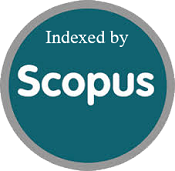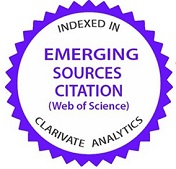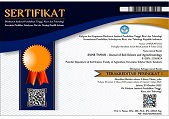Rubber plantations in tropical landscapes: agronomic systems, environmental impacts, and evidence-based management recommendations
Abstract
While Natural Rubber (NR) supports global supply chains, rapid expansion in South and Southeast Asia has noticeable effects on biodiversity, hydrology, and the carbon balance. This review synthesises the economic importance, environmental challenges, commercial applications, and ecological impacts of rubber production and plantation expansion. Furthermore, the study combines high-resolution deforestation attribution (Sentinel-2/Landsat), Eddy-Covariance (EC) comparisons of plantations and nearby tropical forests, and models that include a rubber-specific Plant Functional Type (PFT). In addition, conversion from forest to rubber consistently simplifies habitats, decreases species richness and functional diversity, reduces ecosystem carbon storage, raises peak flows and sediment export, and lowers baseflow. Conversely, replacing annual cropland can increase above-ground biomass and provide partial carbon gains. As such, results depend systematically on prior land use, monsoon intensity and rainfall patterns, elevation, and management practices (monoculture versus diversified agroforestry). The study recommends directing new planting onto already cleared land through spatial planning and reliable traceability; adopting diversified rubber agroforestry and soil- and water-conserving methods. This includes explicitly integrating rubber within zero-deforestation policies and results-based carbon payments. In line with this, rubber-specific modelling and open flux datasets should support climate-risk assessments and monitoring. Overall, focused governance and agroforestry strategies can balance ecological trade-offs while maintaining production, aligning natural-rubber supply with verifiable climate and biodiversity safeguards.
Keywords
Full Text:
PDFReferences
Adnan, A. M., & Wang, J. (2024). Investigation of the effects of nano-Al2O3 addition on compatibility, rutting and fatigue properties of styrene-butadiene-rubber modified asphalt. Construction and Building Materials, 416, 135267. https://doi.org/10.1016/j.conbuildmat.2024.135267.
Afrizon, Ishak, A., Fauzi, E., Miswarti, Rosmanah, S., & Sastro, Y. (2021). Patterns and causes of conversion of smallholder rubber plantation to oil palm (case in Batik Nau sub district, Bengkulu Utara Regency). E3S Web Conf., 306, 02020. https://doi.org/10.1051/e3sconf/202130602020.
Ali, A. A., Fan, Y., Corre, M. D., Kotowska, M. M., Preuss-Hassler, E., Cahyo, A. N., . . . Knohl, A. (2022). Implementing a New Rubber Plant Functional Type in the Community Land Model (CLM5) Improves Accuracy of Carbon and Water Flux Estimation. Land, 11(2), 183. https://doi.org/10.3390/land11020183.
Ali, M. F., Akber, M. A., Smith, C., & Aziz, A. A. (2021). The dynamics of rubber production in Malaysia: Potential impacts, challenges and proposed interventions. Forest Policy and Economics, 127, 102449. https://doi.org/10.1016/j.forpol.2021.102449.
Baidoo, M. F., Adjei, E. A., Opoku, R., & Aidam, G. s. S. K. (2022). Rubber seed oil: Potential feedstock for aviation biofuel production. Scientific African, 17, e01393. https://doi.org/10.1016/j.sciaf.2022.e01393.
Byerlee, D. (2014). The Fall and Rise Again of Plantations in Tropical Asia: History Repeated? Land, 3(3), 574-597. https://doi.org/10.3390/land3030574.
Cambui, E. C. B., de Vasconcelos, R. N., Mariano-Neto, E., Viana, B. F., & Cardoso, M. Z. (2017). Positive forestry: The effect of rubber tree plantations on fruit feeding butterfly assemblages in the Brazilian Atlantic forest. Forest Ecology and Management, 397, 150-156. https://doi.org/10.1016/j.foreco.2017.04.043.
Chiarelli, D. D., Rosa, L., Rulli, M. C., & D'Odorico, P. (2018). The water-land-food nexus of natural rubber production. Journal of Cleaner Production, 172, 1739-1747. https://doi.org/10.1016/j.jclepro.2017.12.021.
Cornish, K., & Cherian, S. (2021). 2 - Commonalities and complexities in rubber biosynthesis. In S. Kohjiya & Y. Ikeda (Eds.), Chemistry, Manufacture, and Applications of Natural Rubber (Second Edition) (pp. 23-50). Woodhead Publishing. https://doi.org/10.1016/B978-0-12-818843-9.00013-8
Dilipkumar, M., Chuah, T. S., Goh, S. S., & Sahid, I. (2020). Weed management issues, challenges, and opportunities in Malaysia. Crop Protection, 134, 104347. https://doi.org/10.1016/j.cropro.2017.08.027.
Directorate General of Estate Crops. (2017). Tree crop estate statistics of Indonesia—Rubber 2015–2017. Ministry of Agriculture of Republic of Indonesia. https://ditjenbun.pertanian.go.id/?publikasi=buku-publikasi-statistik-2015-2017
Du, C., Li, D., Wang, W., Yang, X., Wu, Z., Yang, C., . . . Qi, D. (2024). Effects of Rubber Plantation Restoration in National Parks on Plant Diversity and Soil Chemical Properties. Diversity, 16(11), 701. https://doi.org/10.3390/d16110701.
FAO. (2018). FAOSTAT online statistical service. Food and Agriculture Organization of the United Nations. https://www.fao.org/faostat/
Gautam, V., Kumar, D., Kumar, A., & Pawar, M. J. (2024). Investigation on dry abrasion wear of natural and synthetic fiber reinforced polymer composites filled with stone waste. Materials Today: Proceedings, 113, 210-215. https://doi.org/10.1016/j.matpr.2023.08.192.
Giambelluca, T. W., Mudd, R. G., Liu, W., Ziegler, A. D., Kobayashi, N., Kumagai, T. o., . . . Kasemsap, P. (2016). Evapotranspiration of rubber (Hevea brasiliensis) cultivated at two plantation sites in Southeast Asia. Water Resources Research, 52(2), 660-679. https://doi.org/10.1002/2015WR017755.
Gohet, E., Saaban, I., Soumahoro, M., Uche, E., Soumahoro, B., & Cauchy, T. (2013). Sustainable rubber production through good latex harvesting practices: An update on mature rubber fertilization effects on latex cell biochemistry and rubber yield potential. Cirad - Agritrop. https://agritrop.cirad.fr/574668/.
Guerra, N. B., Sant'Ana Pegorin, G., Boratto, M. H., de Barros, N. R., de Oliveira Graeff, C. F., & Herculano, R. D. (2021). Biomedical applications of natural rubber latex from the rubber tree Hevea brasiliensis. Materials Science and Engineering: C, 126, 112126. https://doi.org/10.1016/j.msec.2021.112126.
Guo, S., Wu, Z., Liu, W., Sun, Z., Wu, L., Fang, M., & Wang, P. (2023). Attribution analysis of water use efficiency in tropical rubber plantations during drought-monsoon season transition. Frontiers in Forests and Global Change, Volume 6 - 2023. https://doi.org/10.3389/ffgc.2023.1208595.
Hanieh, A. (2021). Petrochemical empire. The geo-politics of fossil-fuelled production. New Left Review, II(130), 5-38. https://newleftreview.org/issues/ii130/articles/petrochemical-empire.
Huang, C., Zhang, C., & Li, H. (2022). Assessment of the Impact of Rubber Plantation Expansion on Regional Carbon Storage Based on Time Series Remote Sensing and the InVEST Model. Remote Sensing, 14(24), 6234. https://doi.org/10.3390/rs14246234.
Joshi, L., Wibawa, G., Vincent, G., Boutin, D., Akiefnawati, R., Manurung, G., . . . van Noordwijk, M. (2002). Jungle rubber: A traditonal agroforestry system under pressure. Centre for Research in Agroforestry (ICRAF) - World Agroforestry Centre. https://www.cifor-icraf.org/knowledge/publication/28972/
Kawahara, S., Nishioka, H., Yamano, M., & Yamamoto, Y. (2022). Synthetic Rubber with the Tensile Strength of Natural Rubber. ACS Applied Polymer Materials, 4(4), 2323-2328. https://doi.org/10.1021/acsapm.1c01508.
Kenney-Lazar, M., Wong, G., Baral, H., & Russell, A. J. M. (2018). Greening rubber? Political ecologies of plantation sustainability in Laos and Myanmar. Geoforum, 92, 96-105. https://doi.org/10.1016/j.geoforum.2018.03.008.
Lan, G., Chen, B., Yang, C., Sun, R., Wu, Z., & Zhang, X. (2022). Main drivers of plant diversity patterns of rubber plantations in the Greater Mekong Subregion. Biogeosciences, 19(7), 1995-2005. https://doi.org/10.5194/bg-19-1995-2022.
Ling, Z., Shi, Z., Gu, S., He, G., Liu, X., Wang, T., . . . Gao, L. (2022). Estimation of Applicability of Soil Model for Rubber (Hevea brasiliensis) Plantations in Xishuangbanna, Southwest China. Water, 14(3), 295. https://doi.org/10.3390/w14030295.
Liu, C., Jin, Y., Liu, C., Tang, J., Wang, Q., & Xu, M. (2018). Phosphorous fractions in soils of rubber-based agroforestry systems: Influence of season, management and stand age. Science of The Total Environment, 616-617, 1576-1588. https://doi.org/10.1016/j.scitotenv.2017.10.156.
Liyanage, K. K., Khan, S., Herath, V., Brooks, S., Mortimer, P. E., Nadir, S., . . . Xu, J. (2020). Genome Wide Identification of the MLO Gene Family Associated with Powdery Mildew Resistance in Rubber Trees (Hevea brasiliensis). Tropical Plant Biology, 13(4), 331-342. https://doi.org/10.1007/s12042-020-09262-3.
Mahyudin, M. M., Noran, A. S., Ismail, M. Z. H., & Ahmad, K. (2023). Chapter 18 - Diseases of rubber trees: Malaysia as a case study. In F. O. Asiegbu & A. Kovalchuk (Eds.), Forest Microbiology (Vol. 3, pp. 401-414). Academic Press. https://doi.org/10.1016/B978-0-443-18694-3.00017-1
Margono, B. A., Potapov, P. V., Turubanova, S., Stolle, F., & Hansen, M. C. (2014). Primary forest cover loss in Indonesia over 2000–2012. Nature Climate Change, 4(8), 730-735. https://doi.org/10.1038/nclimate2277.
Marques, P. A. C., Guerra, N. B., dos Santos, L. S., Mussagy, C. U., Pegorin Brasil, G. S. A., Burd, B. S., . . . Floriano, J. F. (2024). Natural rubber latex-based biomaterials for drug delivery and regenerative medicine: Trends and directions. International Journal of Biological Macromolecules, 267, 131666. https://doi.org/10.1016/j.ijbiomac.2024.131666.
Michael, P. S. (2020). Soil fertility status and sweet potato cultivation in composted mounds under humid lowland tropical climatic conditions. Sains Tanah Journal of Soil Science and Agroclimatology, 17(2), 8. https://doi.org/10.20961/stjssa.v17i2.43426.
Nair, K. P. (2021). Tea (Camellia sinensis L.). In Tree Crops : Harvesting Cash from the World's Important Cash Crops (pp. 333-362). Springer International Publishing. https://doi.org/10.1007/978-3-030-62140-7_9
Nguyen, L. H., Nguyen, H. D., Tran, P. T., Nghiem, T. T., Nguyen, T. T., Dao, V. L., . . . Fukuda, M. (2020). Biodegradation of natural rubber and deproteinized natural rubber by enrichment bacterial consortia. Biodegradation, 31(4), 303-317. https://doi.org/10.1007/s10532-020-09911-0.
Olthuis, M. (2020). Relevance and development of new rubber technology competences for a sustainable automotive industry [Master Thesis, University of Twente]. https://purl.utwente.nl/essays/81382
Panklang, P., Thoumazeau, A., Chiarawipa, R., Sdoodee, S., Sebag, D., Gay, F., . . . Brauman, A. (2022). Rubber, rubber and rubber: How 75 years of successive rubber plantation rotations affect topsoil quality? Land Degradation & Development, 33(8), 1159-1169. https://doi.org/10.1002/ldr.4171.
Pradeep, B., Sylas, V. P., & Jessy, M. D. (2022). A framework for assessing the vulnerability of rubber plantations to the impacts of climate change with special reference to Kerala, India. Journal of Rubber Research, 25(5), 387-399. https://doi.org/10.1007/s42464-022-00186-z.
Punnoose, K. I., Kothandaraman, R., Philip, V., & Jessy, M. D. (2000). Field upkeep and intercropping. In Natural rubber: Agromanagement and crop processing (pp. 149–169). Rubber Research Institute of India.
Rahayu, R., Herawati, A., & Faizaturrohmah, N. (2021). Effects of various irrigation and fertilizer on water efficiency and tomato yield (Solanum lycopersicum) in Alfisols. Sains Tanah Journal of Soil Science and Agroclimatology, 18(2), 7. https://doi.org/10.20961/stjssa.v18i2.45788.
Rohayzi, N. F., Katman, H. Y. B., Ibrahim, M. R., Norhisham, S., & Rahman, N. A. (2023). Potential Additives in Natural Rubber-Modified Bitumen: A Review. Polymers, 15(8), 1951. https://doi.org/10.3390/polym15081951.
RRII. (1998). Annual report 1997–1998. Rubber Research Institute of India,
RRISL. (2016). Annual report 2016. Rubber Research Institute of Sri Lanka.
Sugebo, B., Yebeyen, D., & Adugna, A. (2022). Latex yield variation among Hevea brasiliensis clones grown under the agro- climate of South-West Ethiopia. Trees, Forests and People, 9, 100285. https://doi.org/10.1016/j.tfp.2022.100285.
Suryanarayanan, T. S., & Azevedo, J. L. (2023). From forest to plantation: a brief history of the rubber tree. Indian Journal of History of Science, 58(1), 74-78. https://doi.org/10.1007/s43539-023-00071-7.
Syed Sagaff, S. A., Syd Ali, N., Mohmad Mahyudin, M., Wong, M. Y., & Yusop, M. R. (2022). Emerging and Existing Major Leaf Diseases of Hevea brasiliensis in Malaysia. Journal of Current Opinion in Crop Science, 3(1), 34-47. https://doi.org/10.62773/jcocs.v3i1.129.
Tanaka, S., Tachibe, S., Wasli, M. E. B., Lat, J., Seman, L., Kendawang, J. J., . . . Sakurai, K. (2009). Soil characteristics under cash crop farming in upland areas of Sarawak, Malaysia. Agriculture, Ecosystems & Environment, 129(1), 293-301. https://doi.org/10.1016/j.agee.2008.10.001.
Tongtape, K. (2022). Propagation of rubber tree resistant to white root disease through somatic embryogenesis from thin cell layer and floral explants and assessment of somaclonal variation by RAPD and SSR markers [Doctoral Dissertation, Prince of Songkla University].
van Noordwijk, M., Ekadinata, A., Leimona, B., Catacutan, D., Martini, E., Tata, H. L., . . . Zulkarnain, T. (2020). Agroforestry Options for Degraded Landscapes in Southeast Asia. In J. C. Dagar, S. R. Gupta, & D. Teketay (Eds.), Agroforestry for Degraded Landscapes: Recent Advances and Emerging Challenges - Vol.1 (pp. 307-347). Springer Singapore. https://doi.org/10.1007/978-981-15-4136-0_11
Vijayakumar, K. R., Dey, S. K., Chandrasekhar, T. R., Devakumar, A. S., Mohankrishna, T., Sanjeeva Rao, P., & Sethuraj, M. R. (1998). Irrigation requirement of rubber trees (Hevea brasiliensis) in the subhumid tropics. Agricultural Water Management, 35(3), 245-259. https://doi.org/10.1016/S0378-3774(97)00019-X.
Vrignon-Brenas, S., Gay, F., Ricard, S., Snoeck, D., Perron, T., Mareschal, L., . . . Malagoli, P. (2019). Nutrient management of immature rubber plantations. A review. Agronomy for Sustainable Development, 39(1), 11. https://doi.org/10.1007/s13593-019-0554-6.
Wang, X., Blanken, P. D., Kasemsap, P., Petchprayoon, P., Thaler, P., Nouvellon, Y., . . . Phattaralerphong, J. (2022). Carbon and Water Cycling in Two Rubber Plantations and a Natural Forest in Mainland Southeast Asia. Journal of Geophysical Research: Biogeosciences, 127(5), e2022JG006840. https://doi.org/10.1029/2022JG006840.
Wang, Y., Hollingsworth, P. M., Zhai, D., West, C. D., Green, J. M. H., Chen, H., . . . Ahrends, A. (2023). High-resolution maps show that rubber causes substantial deforestation. Nature, 623(7986), 340-346. https://doi.org/10.1038/s41586-023-06642-z.
Wang, Y., & Zhang, L. (2025). From primary forests to rubber plantations: A huge ecological loss. The Innovation, 6(5). https://doi.org/10.1016/j.xinn.2025.100836.
Warren-Thomas, E. M., Edwards, D. P., Bebber, D. P., Chhang, P., Diment, A. N., Evans, T. D., . . . Dolman, P. M. (2018). Protecting tropical forests from the rapid expansion of rubber using carbon payments. Nature Communications, 9(1), 911. https://doi.org/10.1038/s41467-018-03287-9.
Watson, P. J. (1998). The History of Rubber Statistics. In Proceedings of the 52nd Session of the International Statistical Institute. https://docslib.org/doc/6167838/the-history-of-rubber-statistics
Yamin, M., Tafarini, M. F., & Andelia, S. R. (2023). The Comparison of Household Economic Level from Conventional to Organic Rubber Farming farming to support Sustainable Development in Agriculture. BIO Web Conf., 69, 04009. https://doi.org/10.1051/bioconf/20236904009.
Yang, S., Wu, Z., Yang, C., Song, B., Liu, J., Chen, B., . . . Zhang, J. (2023). Responses of carbon exchange characteristics to meteorological factors, phenology, and extreme events in a rubber plantation of Danzhou, Hainan: evidence based on multi-year data. Frontiers in Ecology and Evolution, Volume 11 - 2023. https://doi.org/10.3389/fevo.2023.1194147.
Zhang, Z., Ge, H., Li, X., Huang, X., Ma, S., & Bai, Q. (2023). Spatiotemporal patterns and prediction of landscape ecological security in Xishuangbanna from 1996–2030. PLOS ONE, 18(11), e0292875. https://doi.org/10.1371/journal.pone.0292875.
Zomer, R. J., Xu, J., & Trabucco, A. (2022). Version 3 of the Global Aridity Index and Potential Evapotranspiration Database. Scientific Data, 9(1), 409. https://doi.org/10.1038/s41597-022-01493-1.
Refbacks
- There are currently no refbacks.











.png)





